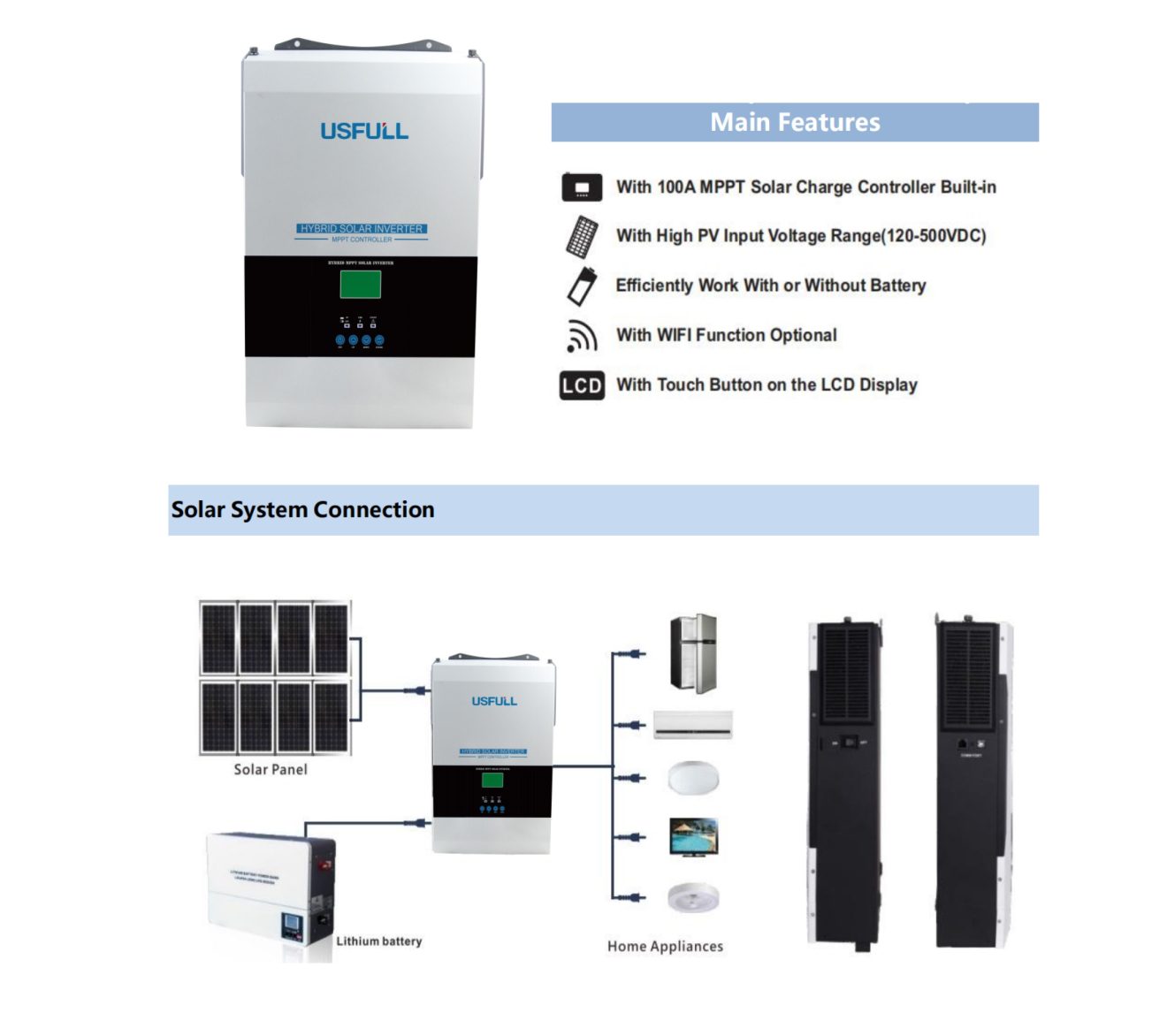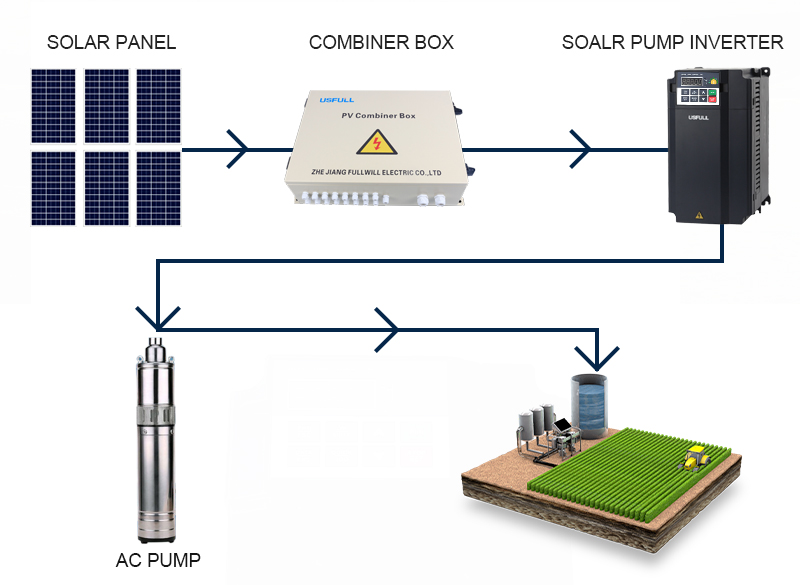Solar hybrid inverters and solar pump inverters are both types of hydropower. Both use solar energy to operate, but each has different specs and capabilities. Knowing the difference between them can save you a lot of hassle, energy, and stress.
It’s essential to understand to make the right decision; they’re easy to confuse with one another. What is the difference, and how can you find a suitable inverter? With this information, you’ll learn to tell the difference between them before purchasing anything.
What Is Solar Hybrid Inverter?
The solar hybrid inverter works in both the AC and DC mode. It can send power back to the grid. The solar hybrid inverters are also known as grid-tied inverters. You can use it for household appliances and other electrical components.

Solar hybrid inverter stores energy from your photovoltaic panels in a battery and then sends it back when needed. You can use it in conjunction with other renewable energy sources to decrease energy costs and help promote sustainability.
Features And Benefits Of Solar Hybrid Inverter
Advantages and features of this extensive range but some of the most important, are listed below:
· Wide Range Of Input Voltage
A solar hybrid inverter has two modes to charge the batteries, either in grid or off-grid mode. It can automatically adjust voltage levels, making it an ideal option for your home appliances.
The solar hybrid inverter uses the input voltage between 120VDC and 500VDC to operate the electrical load.
· Overcharge Controller
The overcharge controller is the critical component inside the solar hybrid inverter. It is responsible for detecting the input voltage and temperature of the battery. It limits the charging current and terminates the charging process when batteries are fully charged.
A built-in overcharge controller keeps the batteries at their peak performance level, enhancing the system’s overall efficiency.
· Enabled WIFI
WIFI enables you to monitor your solar hybrid inverter performance. You can also control its functions right from your phone. WIFI is a solar hybrid inverter specification specially made for remote monitoring, scheduling, and programming that provides the ultimate security and protection.
You don’t have to go to your inverter. You can manage it remotely from anywhere in the world.
· Work With Or Without Battery
The solar hybrid inverter combines the solar panel and a storage battery. Depending on the load requirement, the power generated by photovoltaic panels can charge the battery or directly supply DC to the load.
A solar hybrid inverter can work with or without a battery, so you get continuous power through your solar panels.
· User-Friendly Interface
The solar hybrid inverter specification contains an LCD panel that accurately indicates the status of all these activities. It has several functions like; solar charging, inverting, and battery charging.
Solar hybrid inverter displays all the information you need in an easy-to-read and understandable format.
Operating Level/Modes Of Solar Hybrid Inverter
A solar hybrid inverter has three-level modes that help you operate the solar pump inverter efficiently and in a hassle-free manner.
1. Grid-Tie Mode
This mode of solar hybrid inverter doesn’t need a battery.
2. Back-Up Mode
The inverter is smart and will automatically switch to backup power mode during a grid outage with no fuss.
3. Off-Grid Mode
A solar hybrid off-grid inverter entirely operates independently from the grid. A solar hybrid off-grid inverter uses excess solar power to charge its battery. You can instantly switch between off-grid and grid-connected modes.
What Is a Solar Pump Inverter?
Solar pump inverters are the more efficient version of a typical solar inverter that converts solar power (DC) into electricity (AC). A solar pump inverter is an equipment that uses solar energy to run the pump for water supply, irrigation, and other purposes.
The solar pump inverter circuit diagram is given as:

It provides a reliable power source and manages the fluctuations so that you don’t have to worry about the fluctuations in power supply. In a PV system, a solar pump inverter is ideal for places with little or no access to utility power, including farms, ranches, and remote areas.
Features And Benefits Of Solar Pump Inverter
Some features and benefits of solar pump inverter are associated as:
· Maximum Power Point Tracking System
MPPT, or maximum power point tracking, is an algorithm that adjusts the angle of a photovoltaic array to track the sun’s movement across the sky. It allows a solar array to produce more power than it would have otherwise produced.
This system helps to reduce the stress on batteries and increase their longevity.
· Alarming And Water Level Detection
The alarming and water level detection in solar pump inverter is one of the vital components. It helps to warn you if the water level rises above or drops below a certain level.
The best solar pump inverter detects wet, installation damage, and other fault conditions, which can be very dangerous and create havoc if not detected in time.
· IP65 Rating: Water-Resistant
IP65 means that the inverter is resistant to dust and jets of water. You can use a solar pump inverter outdoors without any worries about rain or dust. Rainfall also does not damage the solar pump inverter.
But if you live in an area where it rains frequently, you have to protect it with a custom enclosure.
· Dry Run Protection
Dry run protection monitors current frequency, voltage, and water level continuously. It prevents burnout or damage to other expensive system components like batteries, electronic controls, and motors. When there is a surge in the power supply of solar pumps, dry run protection switches off automatically.
Dry run protection is also helpful for maintenance or repair work if you find any short circuits.
Operating Level/Modes Of Solar Pump Inverter
The best solar pump inverter also has a three-level menu that gives you the ease of controlling it as a professional or an amateur. You can easily set the parameters of the different level menu by yourself to meet your needs.
Conclusion
The main difference between solar hybrid and solar pump inverter is that solar hybrid inverter doesn’t require a battery to install. It can convert both AC to DC and DC to AC. On the other hand, the solar pump inverter needs a battery. It can only convert the DC to AC.
The Uses of both inverters are versatile. A solar hybrid inverter is best for your residential uses. The best solar pump inverter is essential to agriculture or industrial sites. USFULL’s solar pump inverter and solar hybrid inverter are vital to your desired needs.
